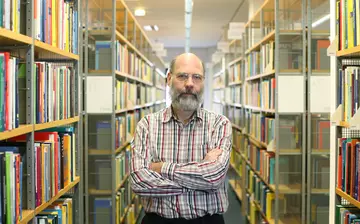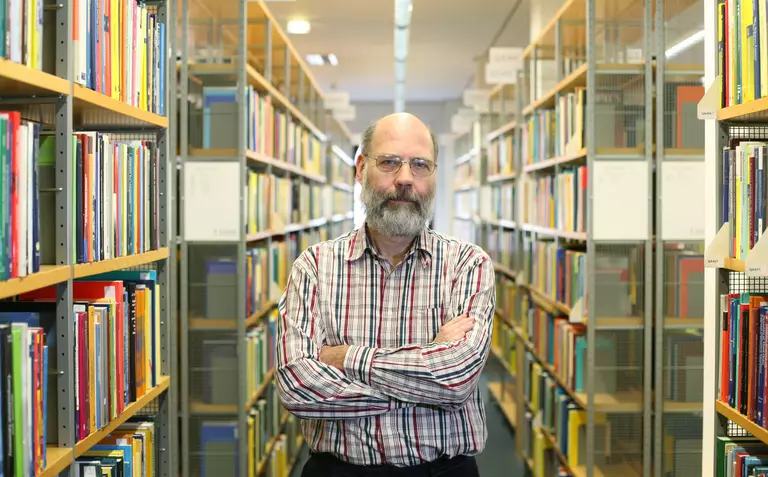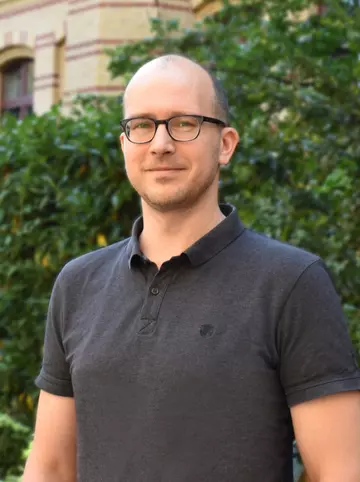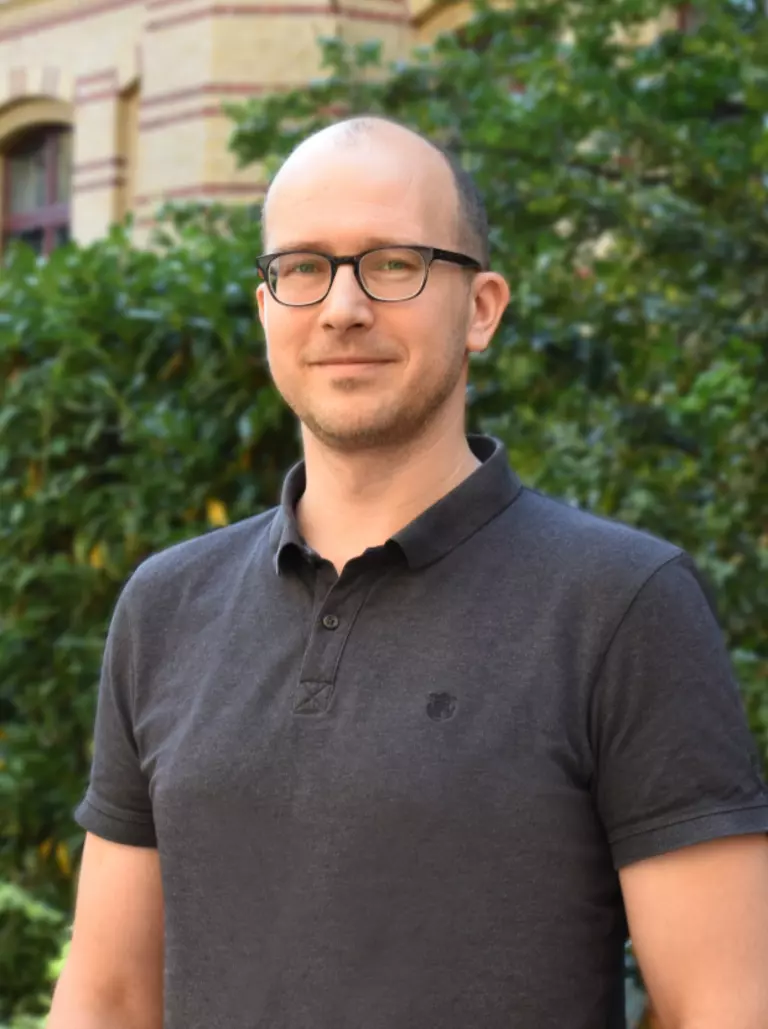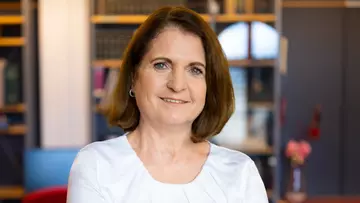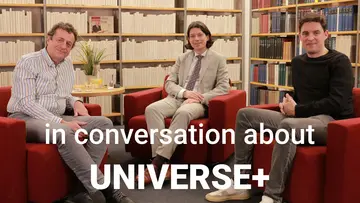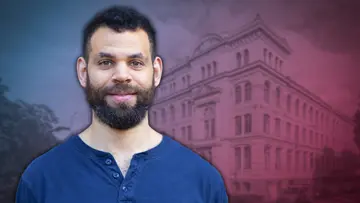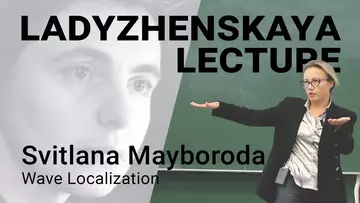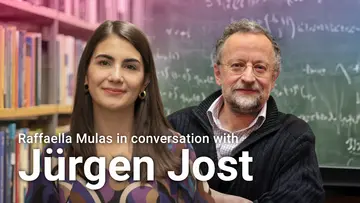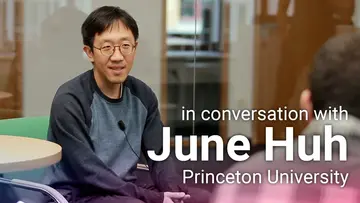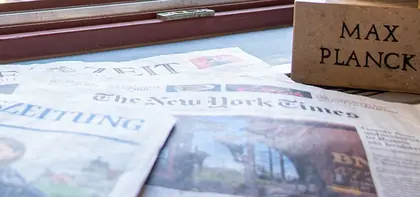
Interview with our Director em. Wolfgang Hackbusch
Published Nov 20, 2022
On November 20, 1998, Professor for mathematics at the University of Kiel Wolfgang Hackbusch was appointed Scientific Member of the Max Planck Society and Director of the Max Planck Institute for Mathematics in the Sciences. Until his retirement in 2014, he headed the working group “Scientific Computing”. In an interview with our former research group leader André Uschmajew, Wolfgang Hackbusch shares his very personal thoughts on his intensive time at our institute, the field of mathematics and the future of science. Thank you very much for this inspiring interview!
Prof. Dr. Dr. h.c. Wolfgang Hackbusch
Wolfgang Hackbusch, born in 1948, studied mathematics and physics at the universities of Marburg and Cologne. After completing his habilitation in Cologne with a thesis on multigrid methods, he took up a professorship at the Ruhr University in Bochum in 1980. In 1982, he became a Professor of Applied Mathematics at the Institute of Computer Science at Christian Albrechts University in Kiel. In 1999 he moved to Leipzig. In addition to his work as director of the institute, he was also an honorary professor at the University of Leipzig.
Wolfgang Hackbusch is a founding member of the Berlin-Brandenburg Academy of Sciences and Humanities and a member of the National Academy of Sciences Leopoldina. He has received numerous honors and awards for his outstanding scientific achievements, including the DFG's Gottfried Wilhelm Leibniz Prize (1994) and the Brouwer Medal of the Dutch Mathematical Society (1996). In 2000, he was awarded an honorary doctorate from the University of Bochum. In the same year, the Carl Friedrich von Siemens Foundation honored him with the Heinz Gumin Prize for Mathematics.
Wolfgang Hackbusch is distinguished for many contributions in the field of Numerical Mathematics. One focus is on efficient methods for solving elliptic differential equations. He was significantly involved in the development of the multi-grid method for the iterative solution of large systems of equations. He is also interested in the treatment of integral equations, especially those of the boundary integral method. Here the panel clustering method was developed, which finally led to the novel technique of hierarchical matrices, which allows matrix operations for large, fully occupied matrices.
Prof. Dr. André Uschmajew
André Uschmajew studied mathematics at the TU Berlin, where he also completed his dissertation. After a postdoctoral stay at EPF Lausanne, Switzerland, he was a Bonn Junior Fellow Professor at the Institute for Numerical Simulation of the University of Bonn and at the Hausdorff Center for Mathematics from 2014 to 2017. Since 2017, he headed the research group “Tensors and Optimization” at MPI MiS. In October 2022, he took over the chair “Mathematical Data Science” at the University of Augsburg.
André Uschmajew‘s research focuses on low-rank matrix and tensor approximation, with emphasis on numerical tensor calculus, nonlinear optimization methods, underlying approximation principles, as well as algebraic and geometric aspects. His goal is to obtain a deeper understanding of multilinear models for tensors and their usage in high-dimensional problems and modern applications.
Interview
André Uschmajew: Wolfgang Hackbusch, you can look back on a very successful career and have made many fundamental contributions for which you also received several prizes. Do you still remember when and why you decided to become a mathematician?
Wolfgang Hackbusch: In fact, this was in my first semester at the University of Marburg. As a pupil I considered mathematics as a very easy matter. In that time, I earned my pocket money by coaching schoolmates in mathematics. I remember that a teacher asked me to coach a pupil two classes above me. It turned out that the subject was linear algebra (!) which at that time was new for me. After looking at the textbook over the weekend I could explain the subject. However, since I thought mathematics was rather easy, it was not really interesting. I was more attracted by chemistry. So it happened that when I started at the University of Marburg, I registered for chemistry with mathematics as minor. Unfortunately, it turned out that the schedules of the lab training in chemistry overlapped with the mathematics lectures. So I decided to take mathematics as my first field and physics as minor. Voluntarily, attended the lectures in experimental chemistry. During this first semester – I had a good teacher in analysis – I understood that mathematics is a really interesting and challenging matter.
You have worked in rather different topics, albeit all of them connected through a common theme of efficient solution of large scale computational problems. How did you choose your research topic?
From the beginning, I was in particularly interested in algorithms. This motivated my interest in Numerical Mathematics. My doctoral thesis was about extrapolation for hyperbolic partial differential equations, a cheap method for achieving higher order convergence. Afterwards I looked at elliptic problems and their discretization and I became aware of a severe dilemma suffered by the iterative schemes used at that time: the larger the system of linear equations the slower the convergence. Fast solvers only existed for the Poisson problem in a square. That was the time when I developed the multi-grid idea.
The multi-grid method could also be applied to integral equations. I got interested in integral equations since I had close contact with colleagues from fluid dynamics who used boundary element methods. As a result of these discussions I understood that fast convergence is not sufficient for efficiency. Another bottleneck is the fact that the underlying matrices are fully populated. This led me to develop the panel clustering method and later to hierarchical matrices. In this sense I would say: I did not choose a research topic, instead the research led me from one topic to the next.
Also, my research on tensors is of this kind. After learning how full matrices can be treated with almost linear complexity, it was natural to apply similar techniques to tensors. The common theme of all these methods is the tree structure which, in fact, was already used by Gauss for the fast Fourier transform.
One striking aspect of your publication record is that you have written papers both on very practical problems such as efficient implementation of solvers as well as on rather abstract questions such as Banach spaces of tensors. Do you see a difference between pure and applied mathematics?
Of course, pure and applied mathematics have different intentions. Pure mathematics is concerned with mathematics itself, while applied mathematics has a focus outside. That focus may involve either a question in natural sciences or the performance of a computational device like a computer, as in numerical mathematics. I am more motivated to study a problem if there is a practical reason, e.g., improving an algorithm. However, often the results produced in applied mathematics later become part of the contents of pure mathematics. When I started, numerical mathematics had not the best reputation, partially since the subjects studied appeared somewhat isolated from other fields of mathematics. Take the example of discretizations of partial differential equations. One was looking at a single discrete problem. Typical properties of matrices were positive definiteness or nonnegativity. With that one could prove convergence of some iterative schemes, but it turned out that the convergence proof of multigrid methods required other tools. The key observation was that one has to study the sequence of discretizations instead of a single one. Such an approach connects numerical mathematics with functional analysis and the theory of approximation. I think there are several examples like that.
You have also written several books, many of them standard in the field. How did you approach these book projects?
The first book was about multigrid. Here I wanted to present my numerical and theoretical results in a consistent form. The later books are the outcome of lectures at the University of Kiel. For instance, in the case of elliptic partial differential equations I aimed to present a combination of the theory of the PDEs together with their discretizations. While standard books usually separate these two aspects, it is more instructive to see the analogies. In the case of iterative methods, I was not content with the existing books. Again, after first versions given as lectures, I wrote the book about iterative methods. The story of the later books is similar.
When you became a director at MPI MiS Leipzig, the institute had only been established for a few years. How do you remember this initial phase of the institute?
The institute was already in a good shape. When I started in Leipzig, it was the right moment for my projects. In Kiel, the financial support from the Leibniz prize had come to its end. Just at that moment I wanted to explore the newly developed technique of hierarchical matrices. My start in Leipzig allowed me to bring several students from Kiel to the Max Planck Institute and to launch a broad research program on the new topic.
Did the move to MPI Leipzig affect the way you were doing research or leading a group?
As mentioned, I got the Leibniz prize when I was at the University of Kiel which allowed me to finance a larger number of projects and to build up a respectable group of doctorands there. In this respect, the MPI Leipzig was a continuation with even better conditions. I could start many projects about theoretical questions, about implementations, and about applications, all with very fruitful results. If I had stayed at the University of Kiel I would have had to first publish some articles and then apply for research grants to continue the work. This takes time and meanwhile other groups would enter this subject. The environment of the MPI allowed me to move more quickly.
How did you personally experience Leipzig at that time?
I enjoyed being in Leipzig. The city had a phase of rapid progress. On the other side, Leipzig has a rich history, in particular concerning music. I often attended concerts in the Gewandhaus.
An important reason for selecting Leipzig as a location for the new institute certainly was to expand the scientific network in the Eastern part of Germany. Had you been in contact with mathematics in the GDR before unification?
Yes, I was in close contact with colleagues in Rostock, Dresden, Halle, Karl-Marx-Stadt (Chemnitz). I was several times in Karl-Marx-Stadt where Ulrich Langer organized workshops in the GDR about multigrid. Moreover, I had invitations to give lectures in Berlin (Humboldt University), Greifswald, and Wismar. I had other opportunities to meet colleagues from GDR at conferences in Prague and Sofia.
Since the founding of the institute 25 years ago the conditions for scientific work and education have changed considerably due to the internet, digitalization and the amount of available information. How do you see research and the role of mathematics in the future?
The technical conditions have improved, but the process of doing mathematics is more or less the same, even in computational mathematics I think. As an example, look at the development of computers. My first computer programs were written on punch cards, and it took one day to get the result. Nevertheless, the fundamental results in numerical mathematics obtained in during that time are still relevant.
Do you have any advice for young scientists / mathematicians who plan to pursue an academic career?
Now, the times seem to be harder. Concerning the researchers in my group, I tried to give them the chance of writing interesting papers. Nowadays, the number of papers and citations seem to be more important than the actual importance of the results. This leads the young researchers to follow the major key words, since this gives the largest audience. This is not what I like and how I acted personally.
What are your plans and goals for the future?
I have no more ambitious plans, but there are still some open questions on which one could work.
